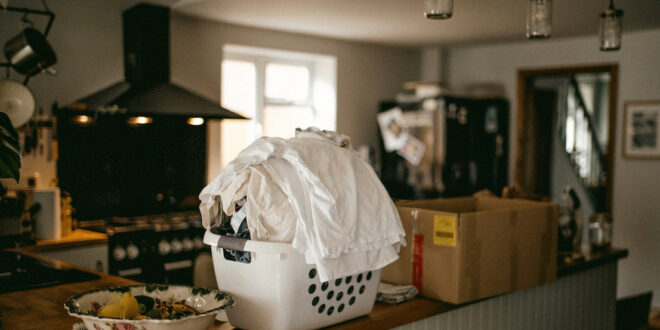The days are cooling down, and for many of us, this means the start of extra heating in the house. It also means we’re likely to be spending more time indoors, cooking more comfort meals, and drying or airing laundry in our homes rather than outdoors. This week, with the following tips, we encourage you to think about ‘cleaning and clutter-removal’ as ways to prevent fire in your home.
Kitchen surfaces
Cooking ‘incidents’ can happen to the best of us, even when we do our very best to watch the pot or pan. But ‘incidents’ can quickly turn to catastrophe when fuel for a fire is close to the source. The fuel can be a greasy stove top, range hood, bench, cupboards, window sill, ceiling, or floor. It can also be flammable fabric such as curtains, dish towels, paper kitchen towels, or substances such as bottles of oil, pottles of margarine, and aerosol cans. If you have a stove-top fire, deny the flames fuel by using a grease-cutting cleaning agent to keep kitchen surfaces clean. Store any flammable materials or substances well away from the stove, and off bench tops.
Appliance filters
Cleanliness also extends to checking filters on appliances. The motor of an appliance such as a range hood, clothes drier, washing machine, heat pump, gas heater, and even your vacuum cleaner, has to work much harder if its filters are blocked with grease, dust, or lint. Working harder equates to a hotter motor or even a malfunction. Unless your appliance instructions stipulate a professional is required for the job, learn how to safely access filters (avoid standing on unsafe surfaces to do this), and how to remove, clean, and replace them. If you’re not sure how to do it, call a professional or refer to the appliances manual. If you don’t have the manual anymore, search for it online using the brand and model number.
Clutter clearance
Household clutter is a fire danger. It provides fuel for a fire, especially when it accumulates around heat sources such as fire places and electric heaters. It can also block your access to safety should a fire start in your home. Keep clutter, especially flammable clutter such as newspapers and magazines, off the floor and away from heat sources. Encourage yourself to do this by dedicating a space in your house (away from a heat source) to paper recycling. If you have kindling or fire-lighting material in your home, store it well away from your fire.
Chimney check
Before you light the first fire of the season, have your chimney checked and swept by a professional (in fact, many insurance companies insist on this if your home is to be adequately covered). Learn how to use a digital calendar to remind you, annually, to attend to this task ahead of time. If digital calendars aren’t your thing, ask a family member or friend to note the date on their digital calendar, or ask your professional chimney service to book you in for your next year’s check when they call to provide their service.
Drying clothing
Don’t let personal cleanliness get in the way of fire safety. When drying or airing your clothing on a rack, do so outside whenever possible (this also helps keep your home dry and warm). If you can’t avoid drying or airing laundry inside, do so during the day when you can make use of the heat of the sun, rather than an appliance, to get the job done (this also saves on power). If you must use a heating appliance to help dry or air laundry, keep the drying rack at least a meter away from any heat sources.
Attending to simple, domestic chores is one of the easiest ways to fire-proof your home. Make it a priority!









Join the Discussion
Type out your comment here:
You must be logged in to post a comment.